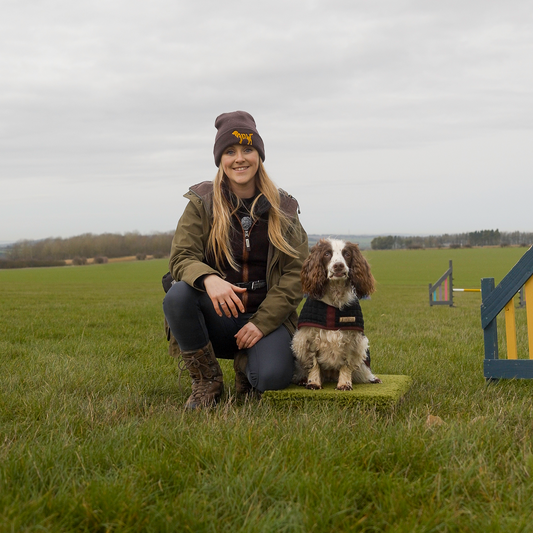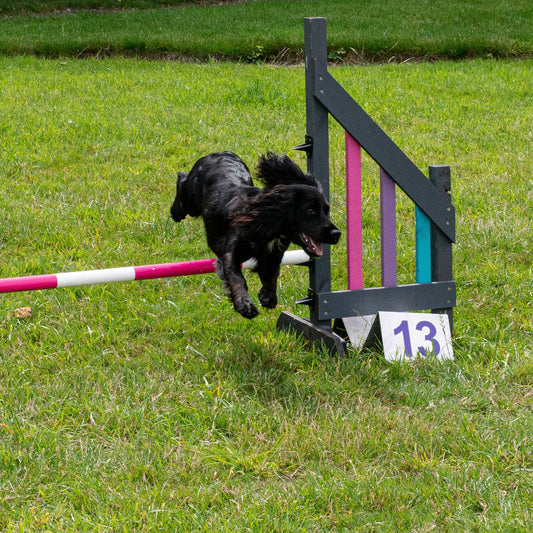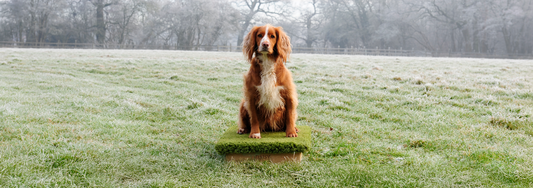How to stop a dog from jumping up on a walk
We can teach a dog not to jump when they meet people or dogs on a walk, by instead training that when we stop walking it is a cue for them to automatically sit and reward them when they do so. Then, progress to proofing their sit around distractions.
Why does this training stop a dog jumping up on a walk?
If we teach a dog that when we stop it is a cue for them to sit, out on our walks we can stop when we see previous triggers such as people or dogs approaching.
With a dog seated, alongside additional training to proof their sit around distractions, the dog is less likely to get excited to the point that they jump up for attention like they previously did.
How to train a dog to sit when you stop walking
Stage One:
- Walk with a dog beside you
- Physically stop walking and say "sit".
- When the dogs bottom hits the ground, say “Good”.
- Give them a reward and continue with your walk.
- Carry on practising in this way taking a random number of steps before you stop and say sit. For example, sometimes it might be just five steps, other times you might pick a fixed point ahead of you like a bench or tree and stop when you become in line with it.
Q: Have you had more than 5 successful repetitions where your dog sat the first time when you stopped and said "sit"?
Yes? Go to stage two. No? Practice stage one a little longer.
TIP: only say "sit" once, if the dog doesn’t sit, use a food lure starting in front of their face moved slowly back and over their head to encourage a sit so you create the behaviour you are then able to reward. Repeating the cue would just teach your dog that they hear "sit sit sit’" before their bottom goes down instead!
Stage Two:
- Walk with a dog beside you.
- Stop and pause for 10 seconds.
- This pause gives your dog, a chance to decide what to do next.
- If they sit, they have learned that you stopping is a cue for them to sit.
- If they don't, it will need a little bit more practice. So, after pausing for a couple of seconds, say sit.
- When the dogs bottom hits the ground, say good and reward.
Practice stage two, until your dog stops as soon as you pause. This means that the dog now takes you stopping walking as a cue for sitting.
About the author:
Hi 👋 I’m Emma, accredited as a professional dog trainer by the Institute of Modern Dog Trainers (IMDT). I help owners of energetic dogs achieve the dog-owning life they envisioned by providing robust obedience & agility training for dogs in Balsham, near Cambridge.
Disclaimer: The content of this article does not include personalised advice and is for information purposes only. If you need individual advice or other enquiries please click here to get in contact or if you're not local to Anglian Dog Works, you can find a trainer in your area by going to the IMDT website: https://www.imdt.uk.com/find-a-qualified-imdt-trainer
Please share your questions and progress:
We would love to see how you get on with your dog’s introduction to place boards. For tips from our trainer and to share success post your pictures and videos in the Anglian Dog Works Facebook group. https://www.facebook.com/angliandogworks






